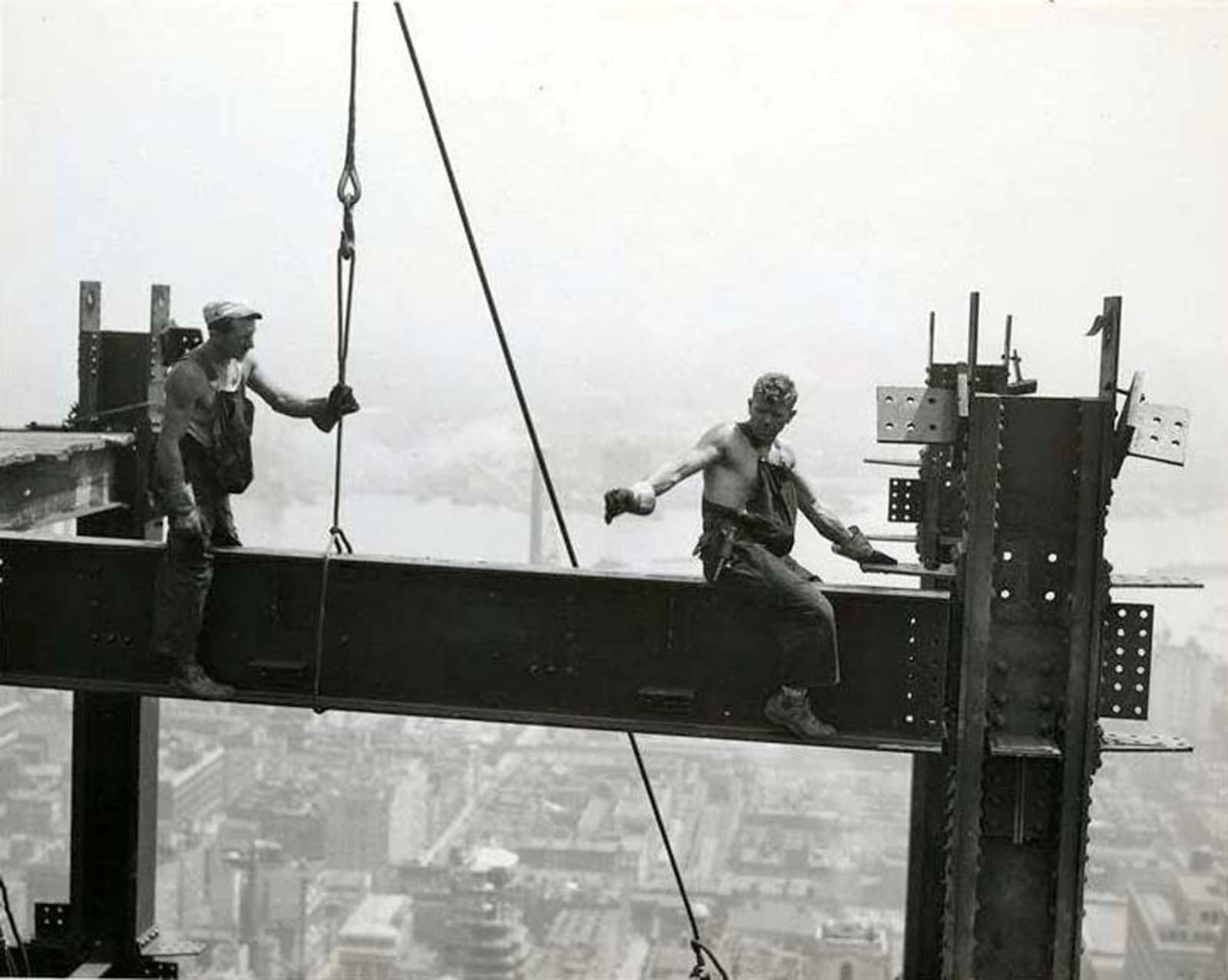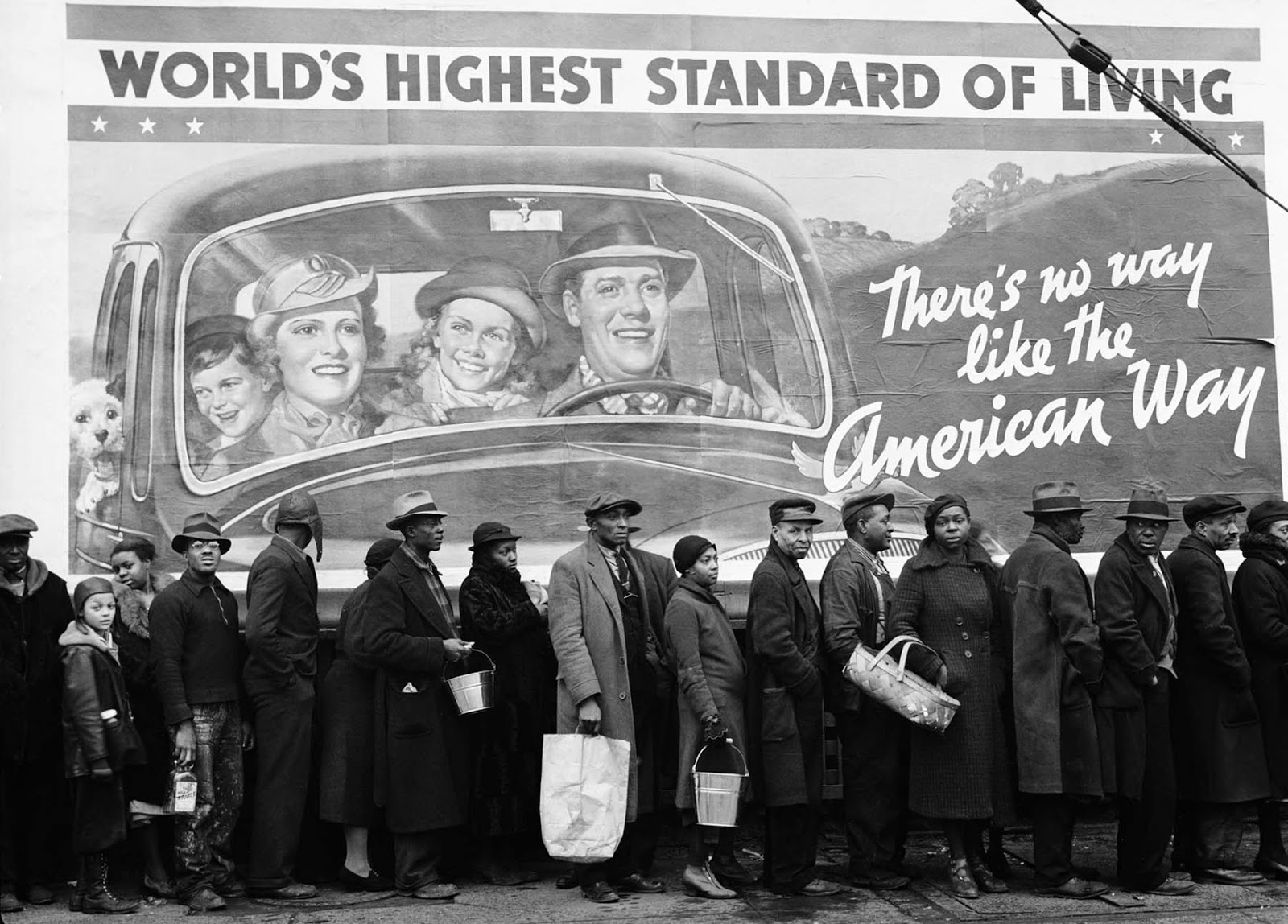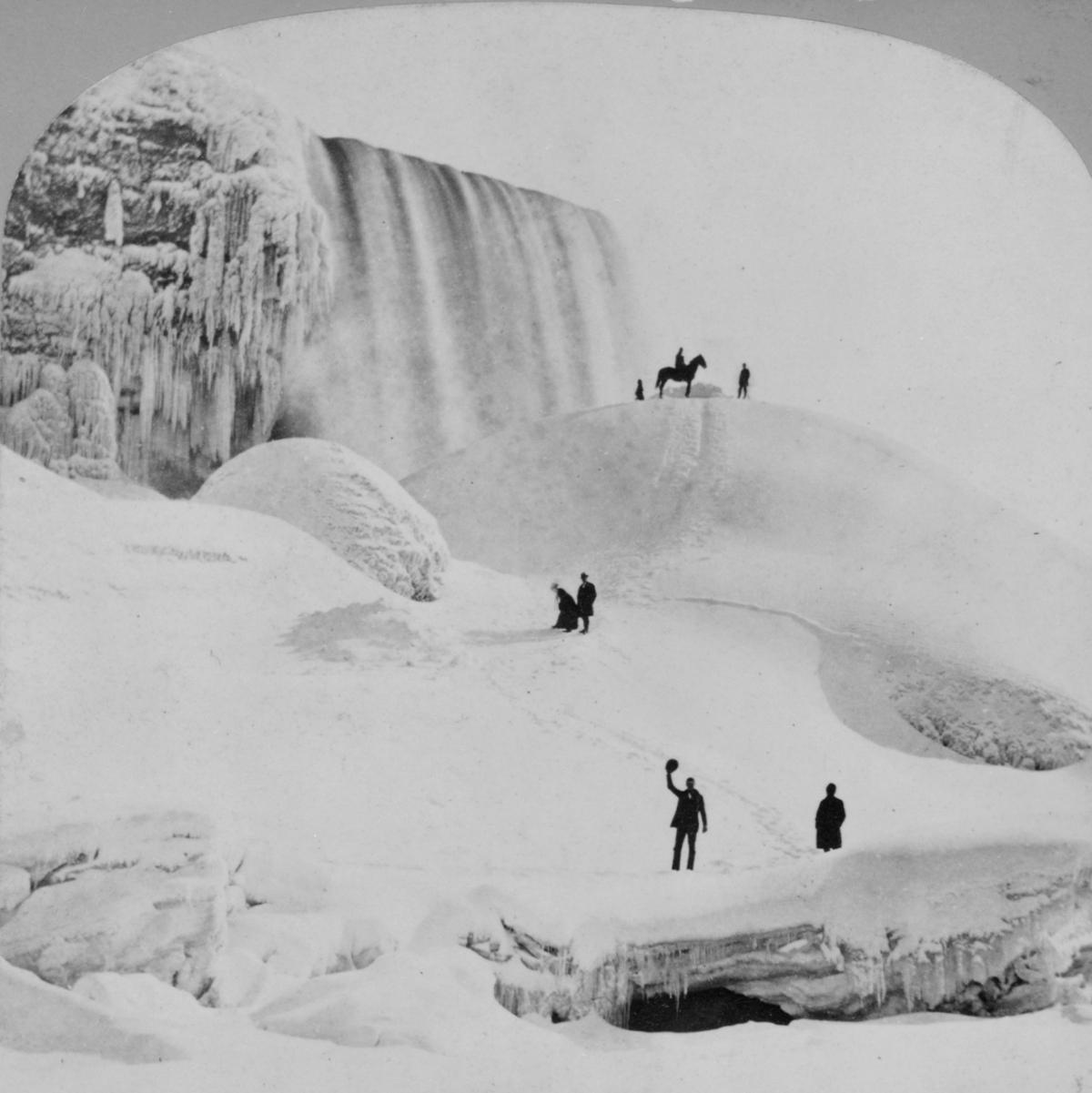Armored vehicles sit in storage at a U.S. facility. 1946.
When World War II ended in 1945, the industrial war machine did not stop overnight. Estimates of the value of the probable surpluses have ranged from a low of $25 billion to a high of $150 billion.
The surpluses included almost every conceivable article and commodity—some of little utility in a peaceful world; others in great demand by the civilian populations of the United States and other countries.
During the war effort, the United States alone had manufactured approximately 294,000 aircraft.
Of that number, 21,583 (7.34%) were lost in the United States in test flights, ferrying, training accidents, etc., and 43,581 were lost en route to the war and in overseas operations.

18 million pounds of scrap brass is piled up at a U.S. Army depot storing unused equipment. 1946.
Following the war, estimates of the number of excess surplus airplanes ran as high as 150,000.
Consideration was given to storing a substantial number of airplanes, but the realization that the expense to store them was too great, many needed to be sold or scrapped.
Some U.S. military aircraft overseas were not worth the time or money to bring back to the States and were consequently buried, bulldozed, or sunk at sea. Most, however, were returned home for storage, sale, or scrapping.
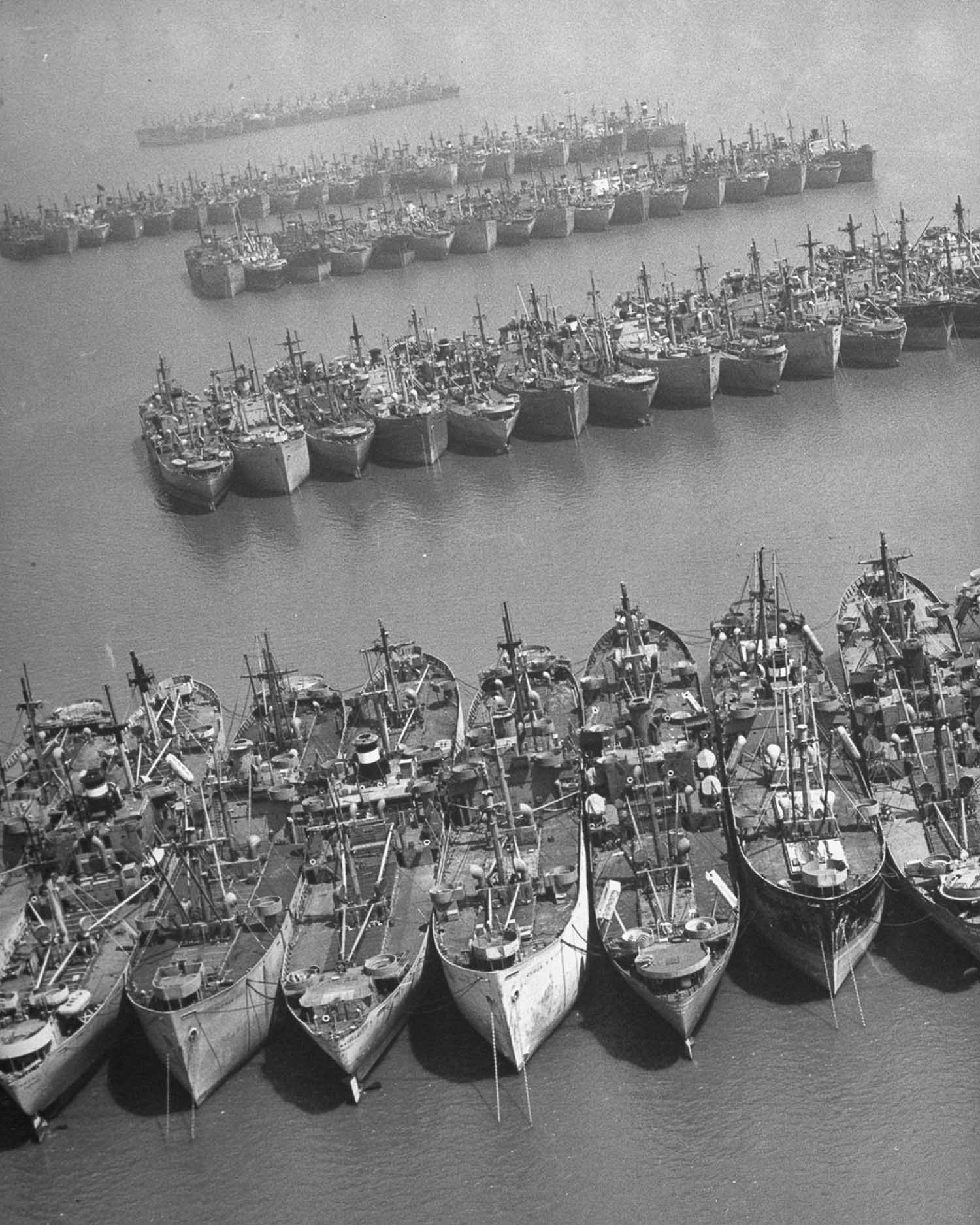
At Kingman Air Force Base in Arizona, an estimated 5,500 aircraft were stored and scrapped in 1945 and 1946.
Most of the vehicles were sold for metal and parts, but some of them were repurposed for civilian use. Tanks and half-tracks were disarmed and reformatted as tractors and bulldozers.
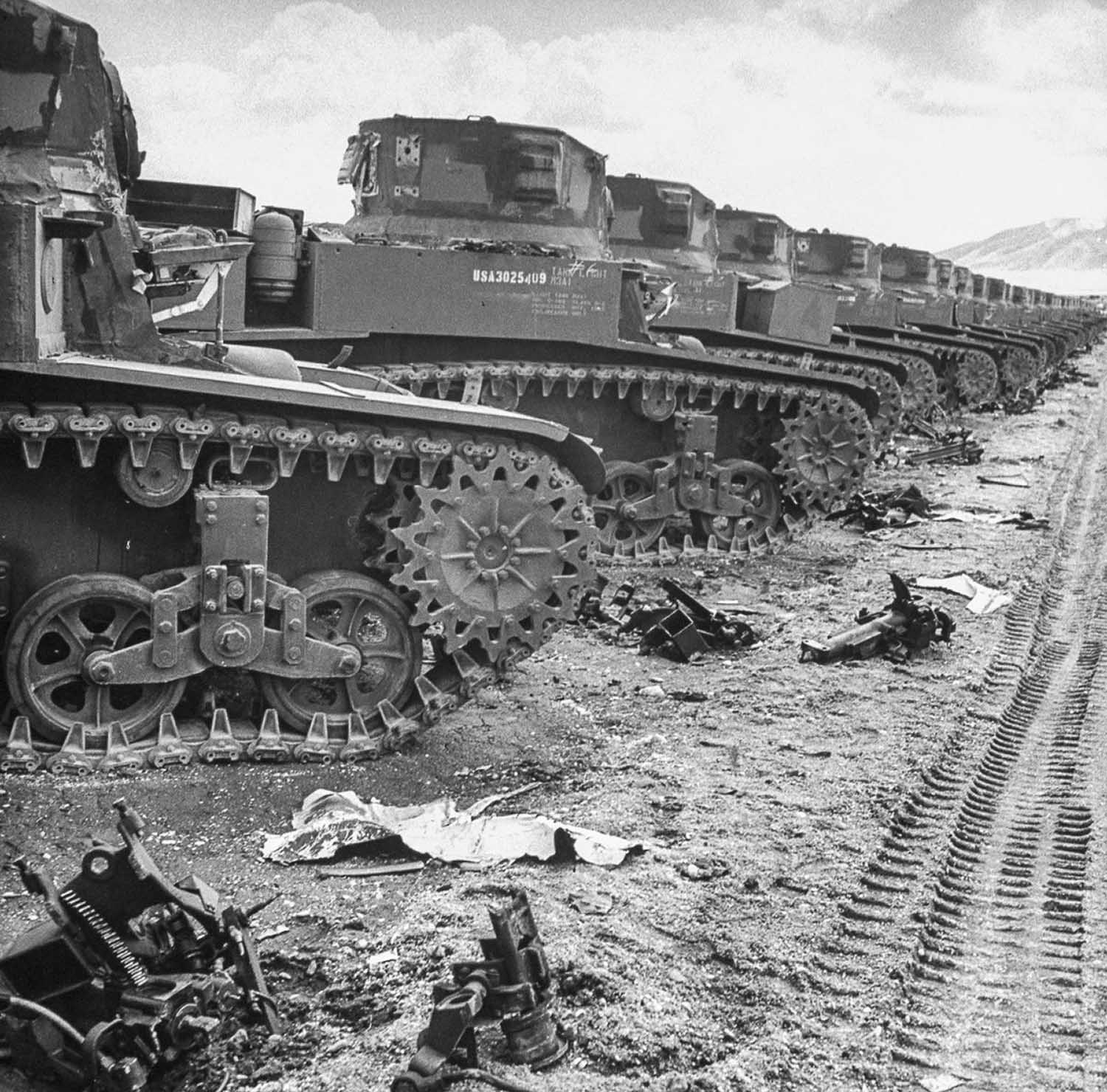
Obsolete M3A1 Light tanks sit in a U.S. Army depot. 1946.
Unused Navy ships were held in reserve, disassembled for parts, scuttled to form artificial reefs, and even used as targets for nuclear tests in the Pacific Ocean.
During the war, nearly 650,000 Jeeps had been produced. They saw use across the globe from Africa, to Europe and Asia.
Once the war ended, many jeeps were sold to or given to locals, or simply left behind rather than having to be transported back to the states.

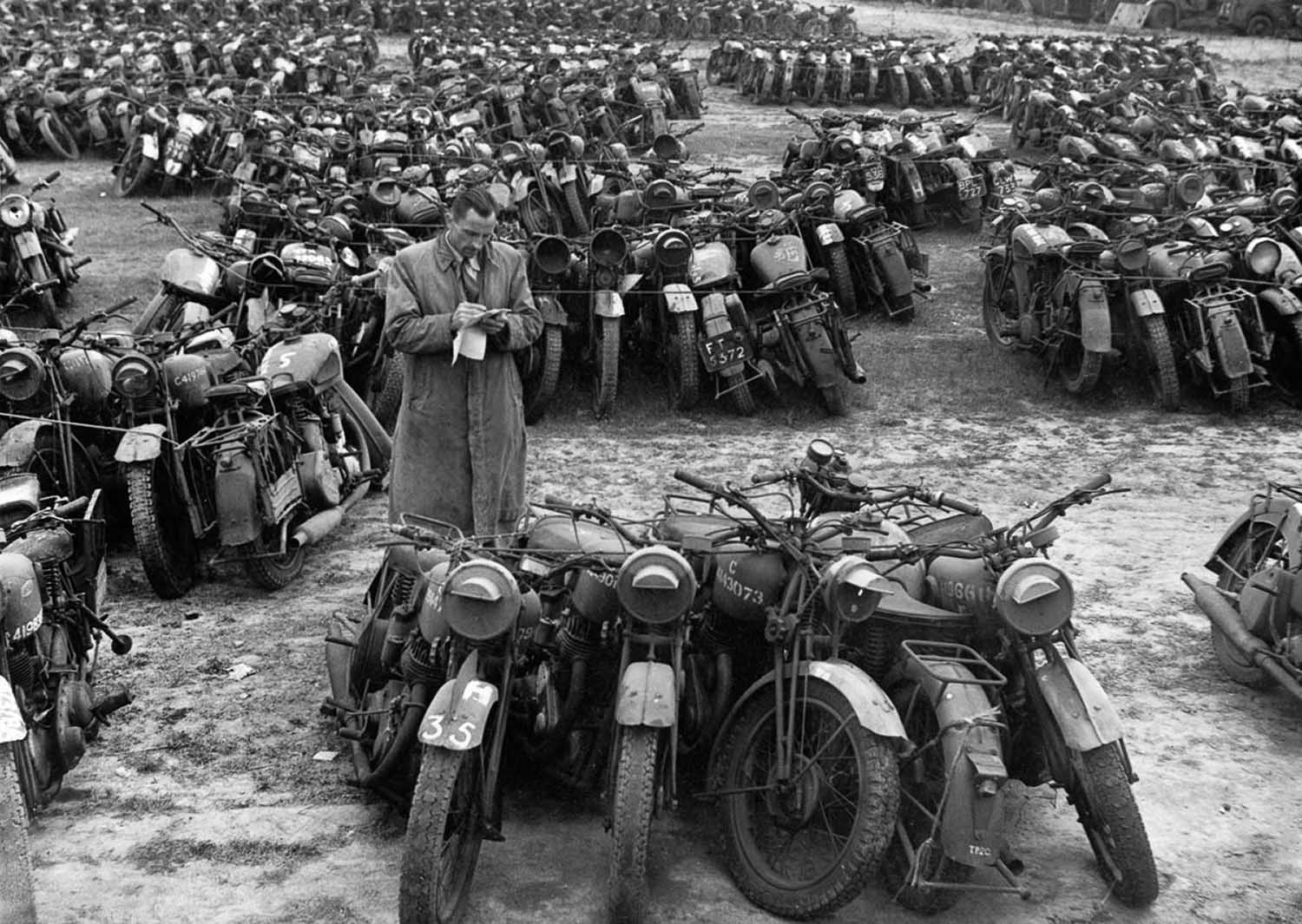
Surplus motorcycles in England are bundled in groups of five to be sold as scrap.

Heavy bombers await disassembly at Kingman Air Force base in Arizona. 1947.

Engines are removed from mothballed planes at Kingman Air Force Base. 1947.

A pile of aluminum is all that remains of a plane at Kingman Air Force Base. 1947.

800 military Jeeps await auction at a storage facility in England. 1946.



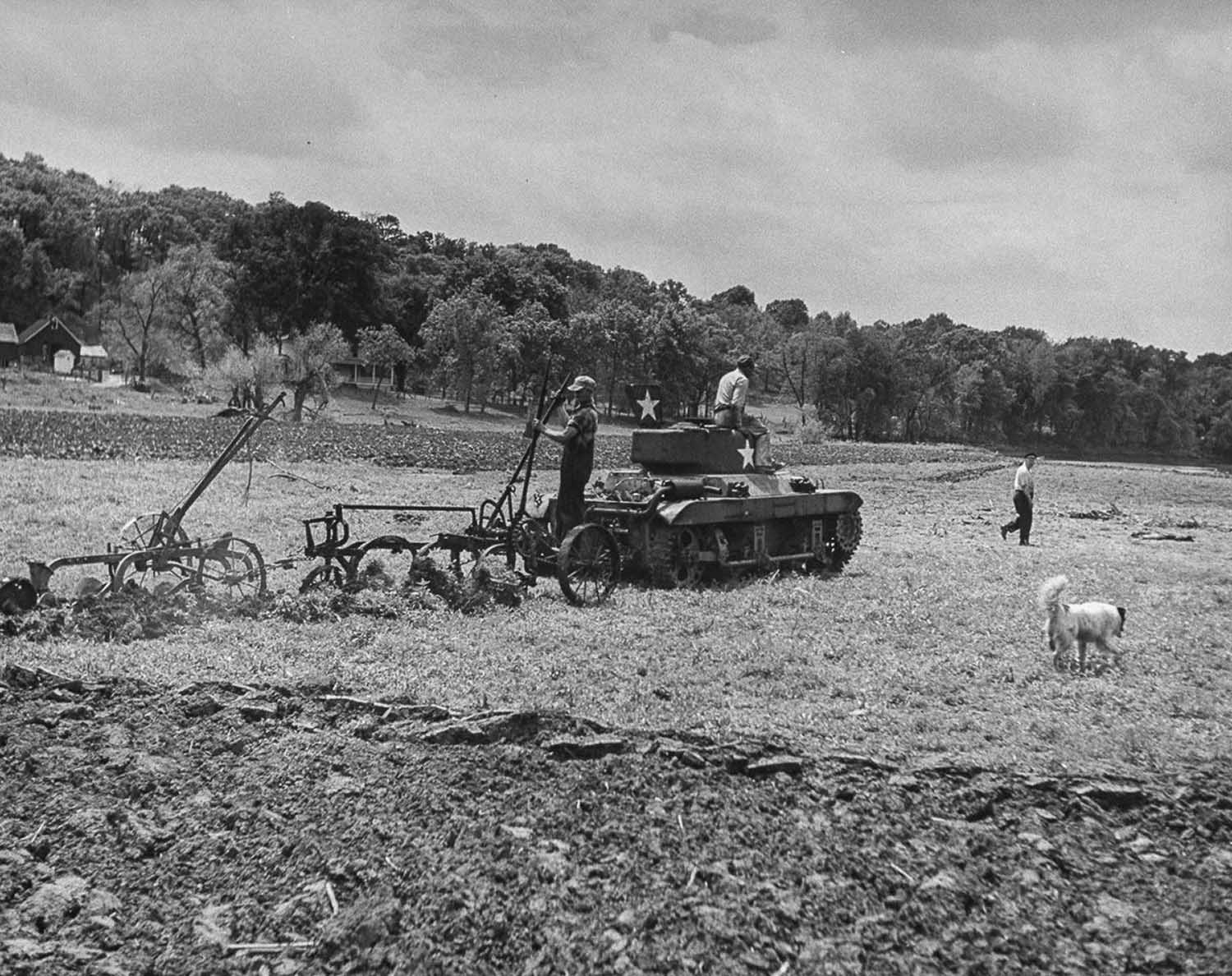
An American-made tank finds a new life pulling a plow on a farm.
(Photo credit: US Army Archives / Getty Images / The LIFE Picture Collection / Airplaneboneyards.com).
